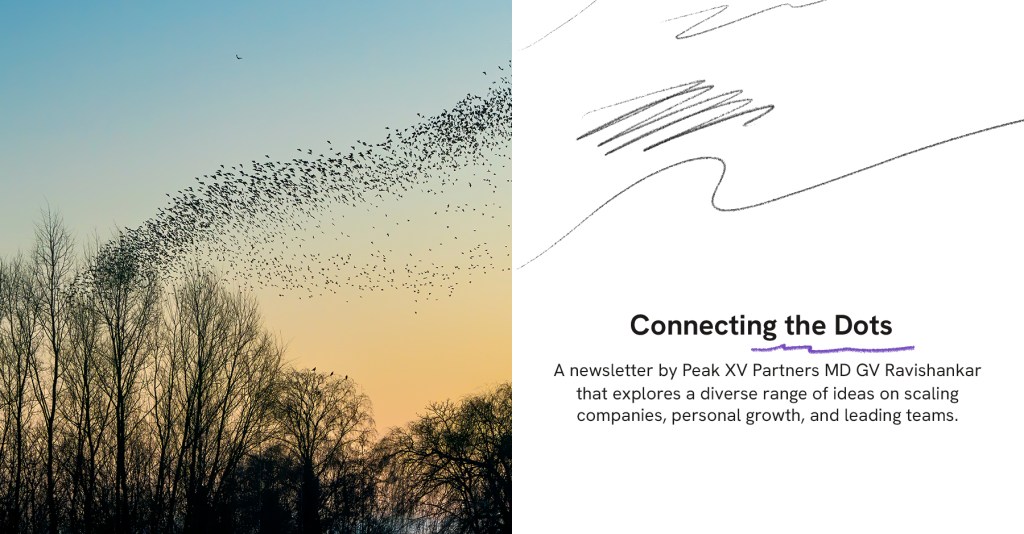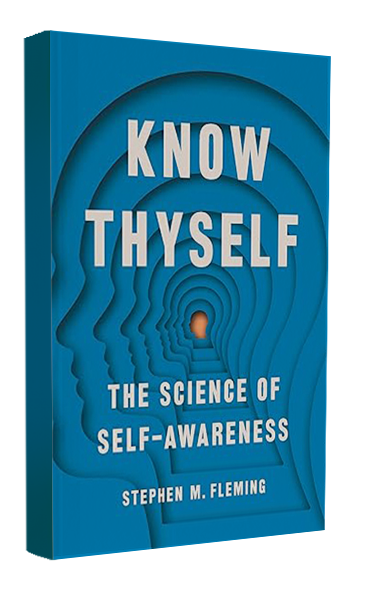Memory Vessels: Success is Just Well-Contained Brokenness
ByGV Ravishankar
PublishedJuly 1, 2025
A life without failure is likely a life untouched by risk, truth, or any real striving. The scars are what prove we showed up. That we dared. That we stretched.
I recently visited an ongoing exhibition at the Museum of Art and Photography (MAP) in Bangalore. On display are curious pieces of art by Dutch artist Bouke de Vries that, at first glance, look like a collection of flawless glass vases. Their glossy surfaces reflect the light just right. Their symmetry is calming. But the perfectly smooth exteriors proudly display shards of what was once a ceramic vase. Carefully collected, not discarded. Contained, but visible by design. Reassembled in a way that doesn’t look like a traditional vase but is unmistakably one.
Art is meant to convey the artist’s perspective on life. But art is also left open for interpretation by the viewer – meant to speak in a language we understand or can relate to. This exhibit made me wonder how, in some ways, these vases were accurate portraits of every successful person’s life I’ve ever seen.
We often walk through life mistaking the glass exterior for the whole story. We look at other people’s lives on Instagram—the vacations, the polished family portraits, the career wins, the celebratory dinners—and assume that perfection is their default setting. That things have always been smooth. That we are somehow the only ones trying to keep our fractured pieces from falling out.
But every one of those glossy pictures is a vase. And inside it are the shards.
What Bouke de Vries has done through this exhibit is offer us a new lens. Instead of hiding the damage, he makes it the core of the piece. The broken pieces aren’t glued together or repaired in the traditional sense. Instead, they are encased in a new form—a transparent shell that allows the story of destruction and survival to coexist in full view.
De Vries makes vulnerability beautiful.
Would you follow people if they shared how imperfect they are? Would you be inspired if the leader said she has her doubts and her bad days? Would you respect success if people were honest about the sheer amount of luck they benefited from? Written backwards, most stories will be shining glass vases. Biographies are filled with heroics of people who had amazing achievements. While there is a lot to learn from them, most of these protagonists are also imperfect, just like us—and sometimes just extremely lucky (just like some of us).
In a world obsessed with perfection, there seems to be limited room for vulnerability. Yet, in the authentic display of life’s realities, there is comfort for those still picking up the shards for the glass vases they are still crafting. In business, in careers, and in family life, we often believe that success is a seamless progression, often achieved overnight. That the people who have “made it” have walked a straight line.
But real progress is jagged. It involves wrong turns, public failures, quiet breakdowns, and moments when the whole thing feels like it’s coming apart. And real life is about picking each of those shards, remembering them, learning from them, and continuing to shape our own glass vase. Just as the shards inside the vase were once part of a functional whole, each of our failures has a purpose. Their breaking wasn’t the end; it was just a step toward transformation.

Embrace your imperfections
Inspired by another artwork—Background Story by Xu Bing at Riyadh’s Diriyah Biennale—a piece I accidentally saw from behind instead of from the front, I had written a reflective piece on how there is beauty in imperfection. In that, I talked about how we should embrace our own imperfections and let light shine through to create our own stories in this world.
The de Vries vases take this further, emphasizing not just acceptance but the inevitability of how we construct our lives, and the need for these shards as somewhat essential in crafting these glass vases. Those glass vases aren’t beautiful independently – in fact it may have appeared too perfect, too smooth, too symmetrical to be art. After all, it’s hard to appreciate mass-manufactured pieces.
But we love handmade objects and that’s often thanks to the imperfections that bring them to life. De Vries’ vases are beautiful because of those shards inside, those imperfections that contrast the perfect glass exterior make those worth pondering upon.
The memory in the material
There’s another powerful message here: These vases are not about loss or failure, but memory and learning. Each fragment within them tells a story, and from those stories there is a lesson. You can almost see where a hand might have slipped, or a moment of rage resulted in shattering. The new shell doesn’t erase those moments. It holds them.
Our lives work the same way. Our memories, both joyful and painful, are what give shape to the present. The mistakes, the arguments, the missed opportunities—these aren’t stains on our narrative. They are the raw material of growth.
Ask any founder who’s built something meaningful, and you’ll hear about pivots that felt like personal failures, product launches that flopped, and team members who didn’t work out. But when the company eventually gets acquired or goes public, it’s that polished glass exterior that gets celebrated.
Insiders see the shards, outsiders see the shell
Mike Moritz, my partner of many years from Sequoia Capital, once noted in a conversation about a winning company that I had concerns about, that insiders see all the imperfections of a company, while someone like Chase Coleman of Tiger Global, who may want to lead the next round, might not view it through the same lens. That’s true beyond business too. As individuals, we are acutely aware of our flaws. We know our own shards by name and often focus too much on them, creating unnecessary negative energy.
But we must remember: every person is in a similar position. Everyone around us is a vase with shards inside. We are all complete despite our flaws. Others are not burdened by our internal inventory of cracks. They see what we want them to see. Our ability to hold the cracks and yet be the best version of what we can be is what will lead us to success.
This is the challenge to overcome: We live inside the vase, experiencing every sharp edge, while others see only its silhouette; we shouldn’t let the shards take away from the beauty of the vase and instead see it as the reason for our beauty and individuality and our growth path.
What de Vries captures so beautifully is this moment of alchemy: when the past is no longer hidden, but reframed. The broken is not ugly. It is evidence. It is history. It is memory. It is growth.
The lost opportunity of a flawless life
A life without failure is not a life well lived. It’s likely a life untouched by risk, or truth, or any real striving. The scars are what prove we showed up. That we dared. That we stretched.
Instead of being afraid of breaking, what if we rebuilt continuously? Instead of chasing flawlessness, what if we took pride in our shards? What if we stopped hiding the fractures and started seeing them as the markers of an examined life? The very act of living with integrity, purpose, or ambition guarantees some level of breakage. Let’s not see it as a bug; it’s a feature.
Embracing the transparent shell
In a way, Bouke de Vries invites us to become our own vessels. Not by disguising the breaks, but by choosing a new kind of containment—one that acknowledges the damage while allowing light to pass through. He invites us to be vulnerable, and in that vulnerability, to be more human.
Each of us carries within us a lifetime of fragments. What matters is whether we see them as evidence of failure or take pride in having tried and grown.
Because the truth is, we are all made of broken things. And when held together with grace, they form something more beautiful than the original: a vessel that remembers, endures, and shines.
Just like de Vries’ vases.
“Instead of chasing flawlessness, what if we took pride in our shards, the broken pieces, the remnants of our past? What if we stopped hiding the fractures and started seeing them as the markers of an examined life?”
Recommended Reads
Three articles I found interesting:
- Many of us delay addressing non-urgent health issues, including general wear and tear, and chronic conditions. Many of us delay addressing non-urgent health issues, including general wear and tear, and chronic conditions. Turns out, there’s something called inflammaging (inflammation plus aging). It refers to chronic, low-grade inflammation caused by your immune system’s response to perceived threats, building stealthily with age. More on this in The Wall Street Journal.
- This CNN article details research into the unique physiological adaptations of South Korea’s Haenyeo, female free divers from Jeju Island. The Haenyeo have historically made their living by collecting seafood from depths of up to 60 feet without the use of breathing equipment. Researchers believe Jeju residents likely possess a genetic variant associated with lower blood pressure, potentially protecting them while diving. Training also helps! This discovery could lead to better treatments for blood pressure disorders.
- Earlier this year, 13-year-old cricket prodigy Vaibhav Suryavanshi became the youngest player shortlisted for the Indian Premier League. Long before national acclaim, Suryavanshi was a known name in his village, thanks to relentless dedication and unwavering family support. As The Indian Express reports, his father quit his job, traveled miles for training, and even built practice pitches at home. His mother rose early to cook, and his older brother pitched in with chores. Truly, it takes a village!
If you have time for longer reads:

Secrets of Adulthood: Simple Truths for Our Complex Lives by Gretchen Rubin
Sample this line from Gretchen Rubin’s latest book: What we do every day means more than what we do once in a while. Rubin shares memorable aphorisms drawn from her life and happiness research, offering practical, relatable insights on adulthood in this book. Its brief, warm style makes it a fresh alternative to traditional self-help.

Know Thyself: The Science of Self-Awareness
by Stephen M. Fleming
In Know Thyself, Stephen Fleming unpacks metacognition, our brain’s ability to monitor its own thoughts. This inner compass helps us filter noise, make decisions and stay aware. Fleming blends recent research with real-world scenarios like education, sports and AI to show how metacognition shapes our choices. A synthesis of philosophy, psychology, and neuroscience, this is a good read on how we understand ourselves.
Do write in at gv@peakxv.com if my interests intersect with yours! Click here to read more articles on Peak XV’s blog. For more editions of Connecting the Dots, click here. I’m also on LinkedIn and Twitter.